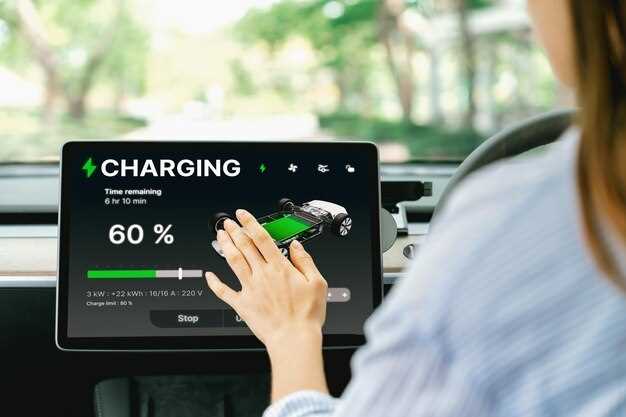
The landscape of electric vehicle (EV) tax credits is poised for significant changes in 2025. As environmental concerns become increasingly pressing, the government is revisiting its approach to incentivizing the adoption of sustainable transportation. The current tax incentives designed to promote EV purchases are under scrutiny, and adjustments are set to reshape the financial landscape for consumers and manufacturers alike.
One of the primary goals of the upcoming adjustments will be to refine the rebate structure associated with EV purchases. A holistic evaluation of the existing framework will aim to enhance its effectiveness, ensuring that consumers receive maximum benefits while stimulating growth in the EV market. As more models become available, the emphasis will likely shift toward promoting a broader range of vehicles, thereby expanding eligibility for these valuable incentives.
Furthermore, the changes in 2025 will also address the sustainability of the current programs. By introducing measures that focus on the environmental impact of EV production and operation, the government seeks to create a robust framework that supports not only the transition to electric vehicles but also long-term ecological goals. As we move closer to this pivotal year, it is crucial for potential buyers and industry stakeholders to stay informed about the forthcoming tax updates and how they might affect the EV landscape.
How Will the New Tax Rebate System Affect EV Buyers in 2025?
The upcoming changes to the tax rebate system for electric vehicles (EVs) in 2025 are set to bring significant implications for potential buyers. With a focus on enhancing incentives aimed at promoting sustainable transportation, these modifications aim to shift consumer behavior towards embracing EV technology.
One key aspect of the new tax policy is the introduction of tiered incentives based on the vehicle’s price and production location. Buyers may see substantial rebates for purchasing qualifying EVs that meet specific criteria. This change is designed to ensure affordability and accessibility for a wide range of consumers, effectively widening the market for electric vehicles.
Additionally, the 2025 tax structure may prioritize incentives for manufacturers who source critical components domestically. This aims to bolster the local economy while simultaneously providing tax benefits to consumers who choose vehicles produced with domestically sourced materials. As such, buyers could find increased value in supporting local industries while enjoying financial rebates.
Moreover, purchasers of EVs will have to remain aware of eligibility requirements under the new system. Certain brands or models might be excluded from receiving rebates, thus influencing consumer choices. Understanding which vehicles qualify can play a pivotal role in a buyer’s decision-making process as they navigate their EV options.
In conclusion, the 2025 changes to the EV tax rebate system present both challenges and opportunities. Buyers can anticipate a more structured framework aimed at incentivizing electric vehicle adoption while needing to stay informed about evolving regulations regarding tax benefits. Ultimately, these shifts are expected to foster a more robust market for EVs, encouraging widespread adoption and long-term sustainability.
Key Qualifying Criteria for EV Incentives Under the 2025 Regulations

The upcoming regulations for electric vehicle (EV) incentives set to take effect in 2025 present several crucial criteria that must be met to qualify for rebates and other financial incentives. Understanding these requirements is essential for potential buyers looking to benefit from government support.
1. Vehicle Eligibility: To qualify for EV incentives, vehicles must meet specific criteria regarding their classification and battery capacity. Generally, only fully electric vehicles and plug-in hybrids with a minimum battery size will be eligible. The regulations will specify the minimum kilowatt-hour (kWh) requirements for battery capacity.
2. Manufacturer Compliance: The manufacturing process of the EV must adhere to new environmental guidelines established in the regulations. Manufacturers will need to demonstrate their commitment to sustainable practices, including the sourcing of materials and production methods, to ensure that their vehicles qualify for the incentives.
3. Income Limits: Income levels of potential buyers could play a significant role in determining eligibility for certain EV rebates. The 2025 regulations may introduce income caps to ensure that incentives primarily benefit lower to middle-income households, making EVs more accessible to a wider audience.
4. Purchase and Leasing Options: Both outright purchases and leasing agreements may qualify for incentives under the new guidelines. However, buyers should be aware that different incentives may apply based on their choice of ownership model, and the regulations will clarify which options are eligible for rebates.
5. Geographic Limitations: Some regions may impose additional criteria based on local emissions standards or incentives provided by state and local governments. Buyers should verify any region-specific requirements that could affect the eligibility for the federal EV incentives.
Overall, the 2025 regulations aim to encourage a broader adoption of electric vehicles while ensuring that the incentives are directed towards environmentally responsible practices and equitable access for all consumers.
Understanding the Impact of Income Limits on EV Tax Credits

The implementation of income limits on electric vehicle (EV) tax credits is set to influence the accessibility and affordability of EVs for a significant portion of the population. As part of new legislation, these income thresholds will determine eligibility for substantial rebates aimed at encouraging the transition to electric vehicles.
Income limits are designed to target tax benefits towards middle- and lower-income households, reflecting a commitment to equity in the electrification of transportation. By setting a cap, the government aims to ensure that those who may need financial assistance most can take advantage of the EV rebate programs. Households earning above the specified limit may not qualify for the incentives, which could deter them from making the switch to an EV, despite the environmental benefits.
The impact of these limits extends beyond individual buyers. Automakers could see changes in their sales strategies as they adjust to a market where potential customers are constrained by income eligibility. This could also influence the types of EVs produced, pushing manufacturers to focus on more affordable models that appeal to a broader audience.
Moreover, understanding the implications of these income thresholds is crucial for potential EV buyers. Prospective purchasers must evaluate their financial situation against the proposed limits to determine if they qualify for the tax rebates. This understanding will ultimately shape their purchasing decisions and the overall adoption rates of electric vehicles in the coming years.
